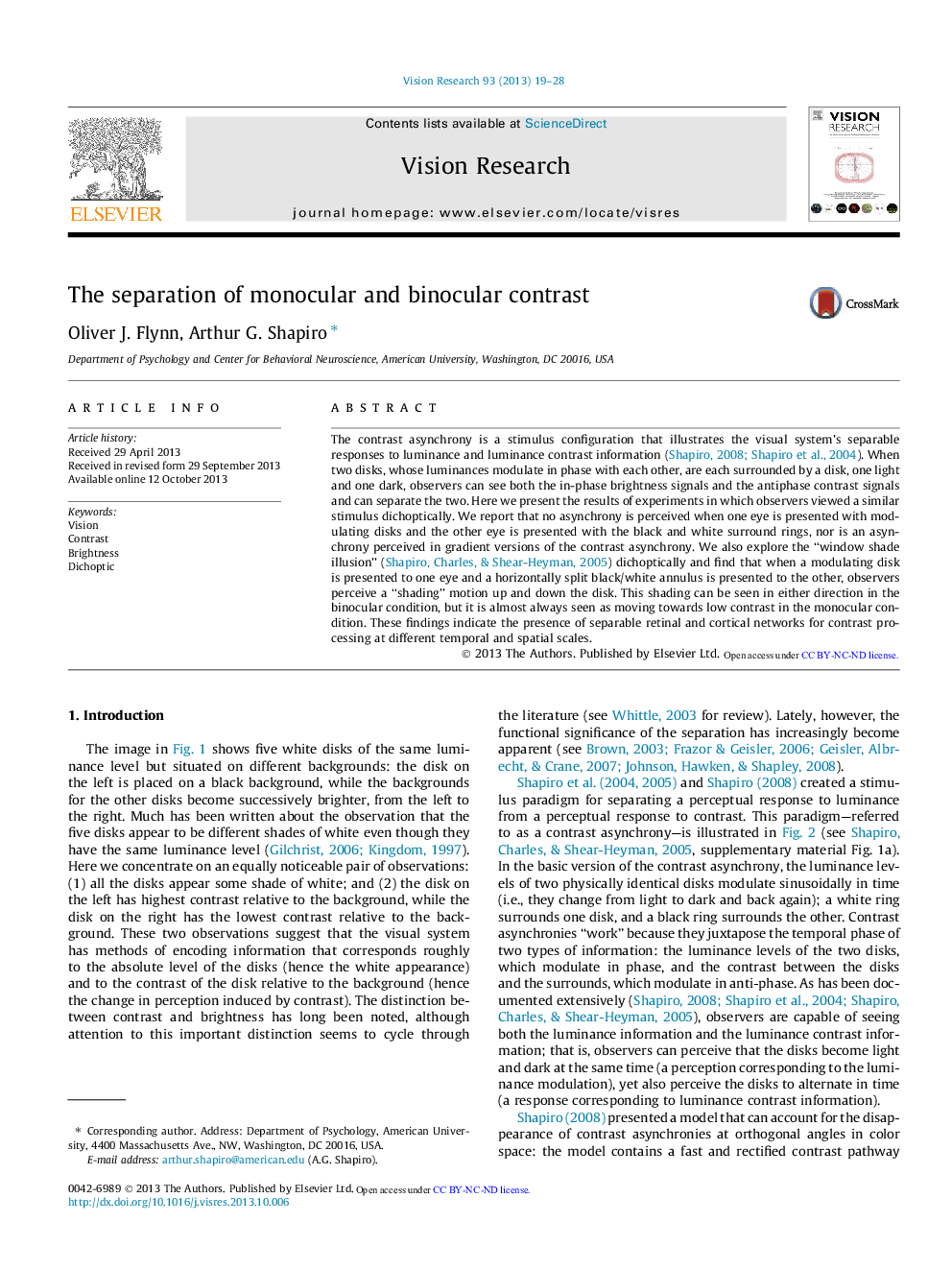| کد مقاله | کد نشریه | سال انتشار | مقاله انگلیسی | نسخه تمام متن |
|---|---|---|---|---|
| 6203524 | 1603201 | 2013 | 10 صفحه PDF | دانلود رایگان |
- Contrast asynchronies are perceived with monocular but not binocular contrast.
- Contrast shading effects can be perceived monocularly and binocularly.
- Results indicate separable retinal (monocular) and cortical (binocular) contrast responses.
- The separable contrast responses operate at different temporal and spatial scales.
The contrast asynchrony is a stimulus configuration that illustrates the visual system's separable responses to luminance and luminance contrast information (Shapiro, 2008; Shapiro et al., 2004). When two disks, whose luminances modulate in phase with each other, are each surrounded by a disk, one light and one dark, observers can see both the in-phase brightness signals and the antiphase contrast signals and can separate the two. Here we present the results of experiments in which observers viewed a similar stimulus dichoptically. We report that no asynchrony is perceived when one eye is presented with modulating disks and the other eye is presented with the black and white surround rings, nor is an asynchrony perceived in gradient versions of the contrast asynchrony. We also explore the “window shade illusion” (Shapiro, Charles, & Shear-Heyman, 2005) dichoptically and find that when a modulating disk is presented to one eye and a horizontally split black/white annulus is presented to the other, observers perceive a “shading” motion up and down the disk. This shading can be seen in either direction in the binocular condition, but it is almost always seen as moving towards low contrast in the monocular condition. These findings indicate the presence of separable retinal and cortical networks for contrast processing at different temporal and spatial scales.
Journal: Vision Research - Volume 93, 18 December 2013, Pages 19-28
